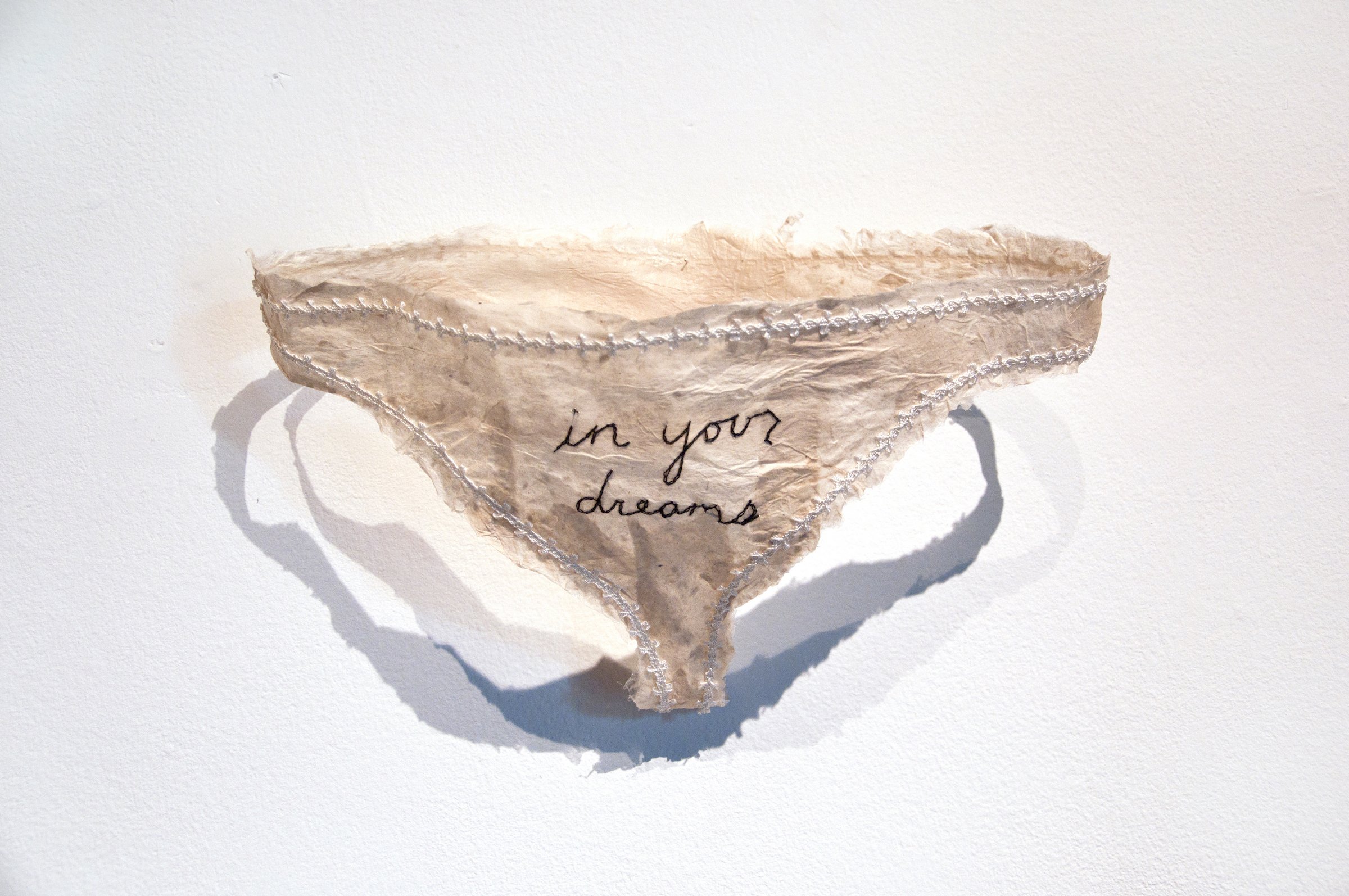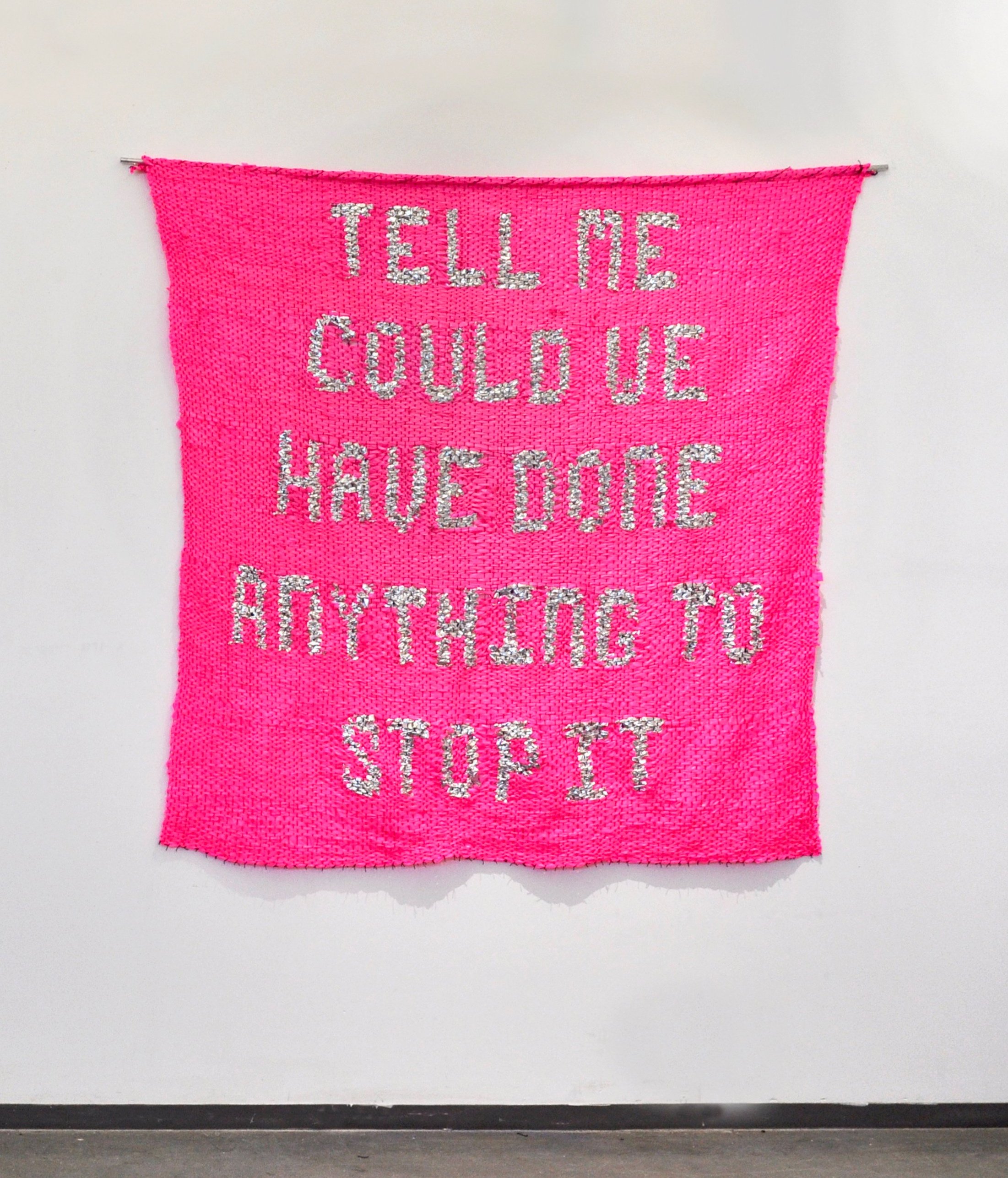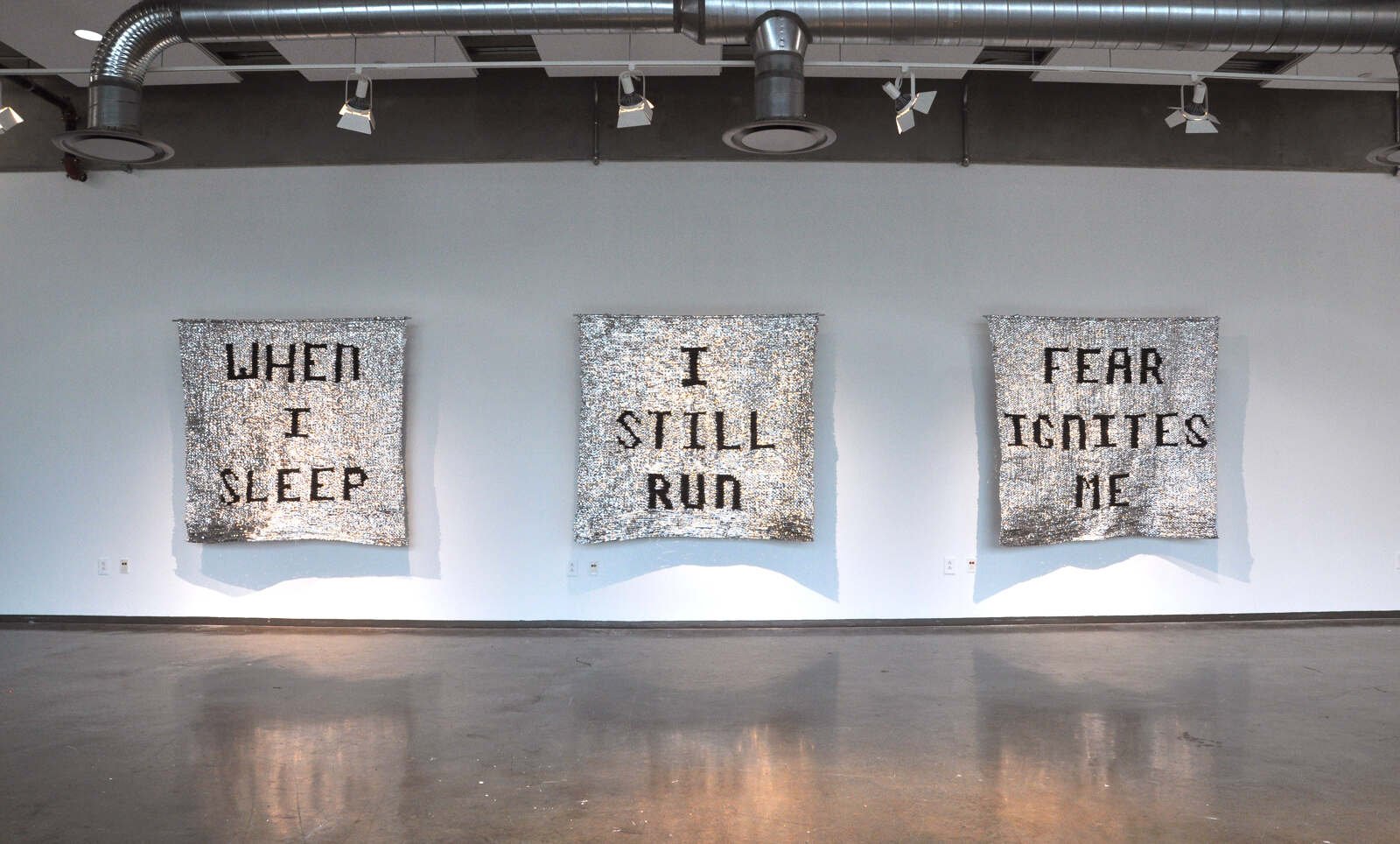
Abigail Ogilvy Gallery is proud to announce that we are working with artist Alex McClay, an interdisciplinary artist who lives and works in Cincinnati, Ohio. We recently sat down with McClay to discuss her artistic practice, her inspirations, and her incorporation of text and writing into her work:
Abigail Ogilvy: Can you take us through your journey to become an artist?
Alex McClay: It started in undergrad. I went to school for Psychology/Environmental Science, and I hated the initial courses. I had started getting really into Photography and somehow, I convinced my parents to let me transfer to art school. When I was in art school, I studied abroad in Italy and it was a game changer. I was able to take courses there that were very craft-focused. These included a jewelry class and a book arts and papermaking class. That’s also where I learned about Penland School of Craft in North Carolina, where I ended up studying for two more years after undergrad. There, I studied book arts, papermaking, letterpress printing, small metals, intaglio printing, and weaving, among other things.
AO: What type of artist do you consider yourself, if any certain type at all?
AM: I would consider myself an interdisciplinary artist. I love experimenting with new media, new materials, and new ways of working. Learning new things keeps my artistic practice alive. I find it difficult to put myself in a specific media-box. At the end of the day, form and content are intertwined - so the form of the work is always changing, depending on what I’m trying to say.
AO: Your materials choices are very intentional and tie heavily into the concepts behind your work. How do you choose your materials for each project?
AM: Sometimes I choose the materials and sometimes the materials choose me. It usually starts with an affinity for something. For example, I use a lot of emergency blankets in my work, which I was introduced to by artist Leigh Suggs in a class. I became totally obsessed with how the material functioned- both in my hands and in its intended use. I thought a lot about what I would have to be experiencing to use one of these blankets in real life. Using this material inspired a series of work that related to trauma. In my work, I was sort of using the material as a metaphorical protectant from the vulnerability of exposing my own stories.

Alex McClay, 50 Foolproof Ways to Say No, 2019. Handmade abaca paper, lace, thread, 12 x 6 x 1 in. each
AO: There is an amazing vulnerability in your work across media. How has sharing this visually changed your own perception of the meaning behind your artwork?
AM: This is such an interesting question. I think sharing my own stories of vulnerability is an act of resistance. Putting my experiences and vulnerability into the work takes it outside of myself and into the collective consciousness. It’s all about connection - about the possibility of someone viewing the work and feeling that thing that happens to your insides when a piece of art speaks to you. My hope, I suppose, is that sharing my vulnerability inspires others to share theirs, to take the weight off, to feel less alone, and to resist the conception that being strong and brave is the same as being “fine”. This brings me to the idea of “radical incompleteness”, which is the third step in “Riyaaz” that Raqs Media Collective discusses in “How to be an Artist By Night”. I love the idea that the work of art is never finished, that putting it out into the world means that “there is always room for another author. Context gathers people”.
AO: How are collaborations important to your practice?
AM: Collaborations, similarly to learning new things, provide fuel for my art practice. Sometimes, someone else can say what I want to so much better than me, or in a way that I would have never thought of. Collaborating means making something that you would never otherwise be able to accomplish. My favorite collaboration was with my brother, Mason, in the book Transmissions. The project started with dialogue - lots of conversations over Christmas in my parent’s basement. From there, we both wrote for the book. We grew up writing together, reading each other our work from across the room before going to bed (we used to share a room back in the day). We both interpreted the conversations we had in such different ways, which I think provides incredible texture in the book. I would have never conceived of the idea for Transmissions by myself - and it’s one of my favorite artist’s books that I’ve made.

Alex McClay, Tell Me, 2021. Survey tape, emergency blanket, thread, 5 x 5 ft.
AO: You’ve done a number of residencies, do you have a favorite?
AM: It’s so hard to pick a favorite, as each residency has come at such a perfect time in my life. Residencies are so fantastic, especially during times of transition. They always seem to come when I don’t have studio access or I’m in the in-between. Right now, I’m a working artist resident at Tiger Lily Press, which is a community press in Cincinnati, OH. It’s been such a great experience because it’s allowed me to continue my printmaking practice when I otherwise would just be working in a studio from home. This one is long term and has taught me a lot about what it takes to keep an organization like this running, what it’s like to focus on creative practice while working a full time job, and how important and beautiful community engagement is when it comes to making art.
AO: Can you elaborate on the importance of text in your work?
AM: I grew up writing, as mentioned above. I process everything through writing. So I make lists, I write poems, I take notes. The Notes App on my phone is a total mess. All that is to say, text is such an important mode of communication for me that it would feel strange to not use it in my work, I think. My love of text is what drove me to want to start doing letterpress printing and making artist’s books. When I moved toward larger installation work in graduate school, I thought about those pieces as books, too. They were just bigger and easier to read. I find I can communicate more effectively by using text, although, I’m always considering going on a text-hiatus and seeing what would happen.

Alex McClay, Courage in Retrospect, 2020. Emergency blanket, survey tape, bamboo yarn, 6 x 6 ft. each
AO: How does the meaning of the text change throughout different methods of presentation (displayed on a wall, in a book, worn, etc.)
AM: It’s not so much that the meaning of the text changes, but that the interpretation of the text may change when presented in unconventional ways. I’m really interested in how written word can take on many meanings simultaneously. It is dependent on so many things: for example, the reader’s understanding of a language, the location of the text on the page, the design of the text or its typeface, and how you have to physically engage with the text: whether you have to listen to it, read it, scroll through it, or even feel it. I think the way we physically engage with text can inform and change its meaning to us. I’m always considering and questioning how form changes content. So I’m always experimenting with new ways of creating, displaying, and interacting with the “book”.
AO: Finally, what advice do you have for future artists?
AM: Studio practice is not just keeping your head down and making the work (although that is the most important part of it). Studio practice is also applying to the shows, residencies, and dream jobs and showing up to events and openings. Studio practice is also feeding your mind, body, and soul. Go on walks, do yoga, read books, have conversations with friends, experience things that will give you something to make work about. It’s all about the balance. Lastly, If you ever feel like you are in a rut, learn something new. Sometimes all it takes is trying to say something in a new way to inspire creativity.
We look forward to our debut exhibition with Alex McClay in September 2022.
Add a comment